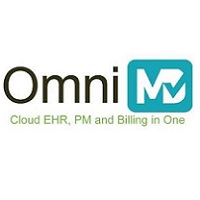 By OmniMD
By OmniMD
Twitter: @omnimd
There is a much discussion among thought leaders in healthcare about how the current provider business model, which is based on transactions and fees for service, can smoothly transition to new business models that compensate providers based on evidenced-based care, improving outcomes and reducing transactions.
In order to achieve this goal, the Department of Health and Human Services (HHS) and Center for Medicaid and Medicare Services (CMS) has decided to incrementally increase the percentage of compensation for provider services based on evidenced-base care. In other words, regulations that reward new behaviors will jump start the switch to evidenced-based care. Evidenced base care means just that. Providers will need to document their performance. Within this framework, Revenue Cycle Management can play a pivotal role.
The Department of Health and Human Services (HHS) has set forth goals that are both challenging and ambitious. These goals aim toward reducing costs, while improving the quality of care patients receive as the industry transitions to evidence-based medicine. All stakeholders across the value chain, such as government agencies, providers and insurance payers will be rewarded when these objectives are met.
The new guidelines require specificity, that defines a mutually agreed upon set of regulations and standards to govern fair practice among all stakeholders in public and private institutions. Once published, these guidelines can be coded into Revenue Cycle Management (RCM) software that will simplify the billing and payments process.
Once these guidelines are published, RCM can easily adapt and reduce friction across the entire value chain, allowing physicians to focus on improving outcomes and quality of care for their patients.
The current RCM model
The current fee-for-service Revenue Cycle Management (RCM) model has evolved toward prospective payment and evidenced-based care. The new evolution in RCM is not just limited for billing; it will alleviate provider concerns about eligibility verification, and act as a powerful internal scrubber to reduce billing rejections and speed up online payment processing at the front end.
Traditional RCM, which only focuses on the ‘Back-End’ pillar, is now coming out of that comfort zone and acting as an ‘End-to-End’ pillar, beginning at patient intake.
Strong practice work flow equals positive cash flow
Accurate and well-designed practice work flow have a direct correlation with positive cash flow. Collecting payments at the time-of-service, determining precise eligibilities, and filing clean claims to payors are the things that keep cash flow running smoothly. A practice’s RCM System needs to offer financial transparency to ensure timely and accurate claims, improving the patient satisfaction level with the billing experience.
Patient intake plays a key role in the revenue cycle process. Patient deductibles, co-payments and eligibility verification are factors to increasing cash flow, as well as ensuring clean claims.
If claims are rejected, each needs to be manually studied and analyzed thoroughly. With the help of RCM solutions that have machine learning capability, RCM will be smart enough to prevent the 80 to 90 percent of rejections, which in turn leads to a better cash flow
Ratcheting up objectives
Last Year, Sylvia M. Burwell, Secretary of the Department of Health and Human Services (HHS) announced that HHS’s goal is to tie 30 percent of fee-for-service Medicare payments to value-based payment models.
Burwell’s future objective, which builds off of the basics of the Affordable Care Act (ACA), is to tie 85 percent of traditional Medicare payments to quality by 2016 and 90 percent by 2018.
Burwell said, “We believe these goals can drive transformative change, help us manage and track progress, and create accountability for measurable improvement.”
“Whether you are a patient, a provider, a business, a health plan, or a taxpayer, it is in our common interest to build a health care system that delivers better care, spends health care dollars more wisely and results in healthier people.”
The future of healthcare is assured when all stakeholders work together towards a common goal. Revenue Cycle Management can provide a smooth transition for medical practices, by successfully automating the billing and payment process, while complying with new guidelines.
This article was originally published on OmniMD and is republished here with permission.
